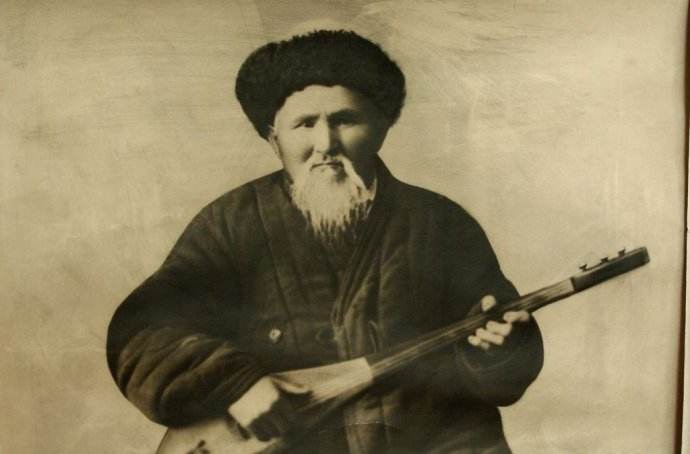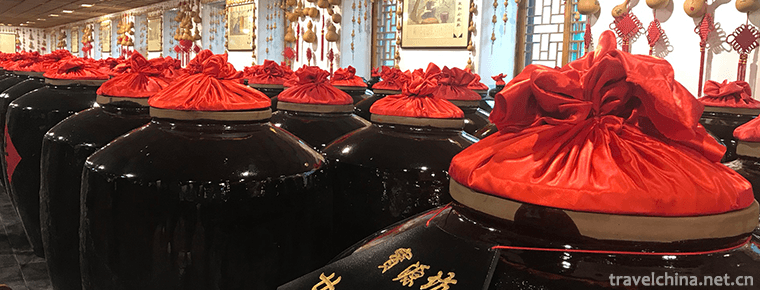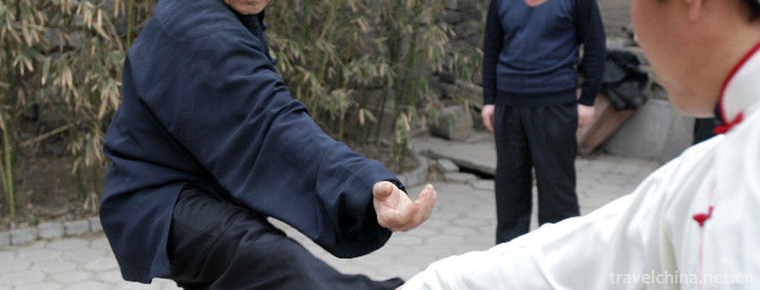2018-12-05

- By ChinaWiki.net
- Chinese Edition
- 2019-05-09
Kirgiz Kumzi Art
Kumzi is an ancient plucked instrument unique to the Kirgiz people. The meaning of "Kumzi" Kirgiz people is "beautiful musical instrument". Mainly spread in Xinjiang Kirgiz Autonomous Prefecture Wuqia County, Aheqi County and Aktao County Kirgiz inhabited areas.
In different historical periods and regions, because of different dialects or transliterations, Kumziqin has different names, such as "Huo Busi", "Hu Ba Si", "He Bisi" and so on.
On June 7, 2008, Kirgiz Kumzi art was approved by the State Council and listed in the second batch of national intangible cultural heritage list.
historical origin
Long, long ago, in a beautiful alpine grassland, there were dense trees, animals shuttling, birds singing and insects chirping. A man named Cambarkhan came here to collect firewood and enjoy the beautiful scenery.
Gradually, the weather was as hot as a stove, and the ground was surrounded by heatwaves. Suddenly, the forest caught fire and the burning tongue devoured the animals in the forest. I don't know how long after, the fire went out, everything was solemn, a sheep fell under the tree, intestines connected to the tree. Suddenly, a gust of wind came, ah, from there unexpectedly issued a moving sound, that sound like the sounds of heaven, into the ears of Kangbar Khan, lingering in my heart. He listened and listened, fascinated by the sound and almost forgot the time.
I don't know how long it took him to go home and think about the sound all the way. He was too eager to hear that melody again. So he found Korean pine and made a violin with sheep's sausage as strings. When he played, the pleasant voice also sounded, and his heart burst with ecstasy. He named the instrument Kumzi. The first song he played was called Cambarhan. "Kangbalhan" has become a classic repertoire of Kumzi.
Kumzi was first spread in the Yenisai River Basin. With the expansion of contacts, it gradually spread to other ethnic groups and regions.
According to the Kirgiz Customs and Habits, a series of materials from the National Committee of the People's Republic of China on the social and historical investigation of ethnic minorities, Kumzi was introduced to the Huns as early as the Han Dynasty. When Wang Zhaojun married the Huns in the first year of Jingning (33 BC), Emperor Zhaojun of the Han and Yuan Dynasties was brought back to Chang'an. When people asked about his name, Zhaojun answered, "It's not like it." (See Yu Yan's book "On the Ridiculous Talk at the Table").
In the western Zhaohe Tungugaochang area of Turpan, Xinjiang, an ancient painting in the early ninth century was found, in which a child played an instrument, the predecessor of Kumzi. In the Tang Dynasty, the ancestors of the Kirgiz nationality presented this musical instrument as a tribute to the Tang Dynasty. Subsequently, the Tang Dynasty gave Kumzi to Japan as a Tang musical instrument. According to the Japanese writer Lin Qianshi, the word "Kutuo" for stringed instruments in Japanese originated from the "Kumzi" imported into Japan in the Tang Dynasty. Kumzi became the ancestor of Japanese stringed instruments, which can still be seen in Japan today (The East Asian Instrument Textual Research by Lin Kaisan).
After the Qing Dynasty Qianlong calmed the Hui rebellion, there were two kinds of gifts that the Kirgiz tributed to the Qing Dynasty. One was the three-stringed Kumzi, the other was the four-stringed Kumzi (see the General Dialect of the Qing Dynasty). During Genghis Khan's Western Expedition in the 13th century, the instrument was introduced to Badak Mountains, Kashmir, Central Asia, Persia, Arabia and other places. This is a great contribution of Kirgiz to the music treasure house of China and the world.
Form of performance
Kumzi also plays in many forms, such as solo, duet, duet, ensemble, singing, dancing and accompaniment. Kirgiz people, with their intelligence and wisdom, have interpreted this ancient musical instrument in a splendid way.
Saipabayi is the home of Kumzi. There are 238 Kumziqi here.
Musical instrument development
Kumziqin has been developing and reforming continuously in the long-term circulation. The earliest Kumzi was the Mongolian tri-stringed piano, which has developed into a wooden tri-stringed piano or a reformed four-stringed tenor Kumzi. There is another kind of "Tumulkumzi". "Tumur" is the meaning of "iron" in Kirgiz, that is, the three-stringed Kumzi made of iron.
From the Yenisei River to the north and south of Tianshan Mountain, from the Ili Valley to the Pamir Plateau, Kumzi has gone through historical changes and vicissitudes of the earth with the Kirgiz people. It is an important instrument for Kirgiz people to express their joy, anger and sorrow.
Cultural value
Kumzi is the best instrument to express Kirgiz's feelings of joy, anger, sadness and joy. There is a Kirgiz proverb that says, "It is a Kumzi Qin that accompanies you in life and death." It has become the symbol of the Kirgiz nation. It has great social value; it records the history of the evolution and development of the Kirgiz nationality in the form of playing and singing in history. The Kumziqin accompanied by the epic Manas has important reference value for the study of the history of the Kirgiz nationality; in culture, it is the representative of the traditional music and musical instruments of the Kirgiz nationality and the most widely used and most widely used instrument of the Kirgiz nationality. Popularization and inheritance of one of the most complete instruments, has a high academic research value. It is a traditional musical instrument shared by Chinese Kirgiz and Kyrgyz nationalities. It plays an active role in cultural exchanges and cooperation between the two countries, as well as friendly folk exchanges and economic development.
In recent years, many folk performers who can play "Kumzi" have died of old age and illness. Their interest in learning is not high and their successors are scarce, which makes it difficult to inherit. At present, some unique variations of playing skills have been lost, and can not be regenerated and remedied. This project is an endangered project.

Ask a Question
Your email address will not be published.



0 Questions